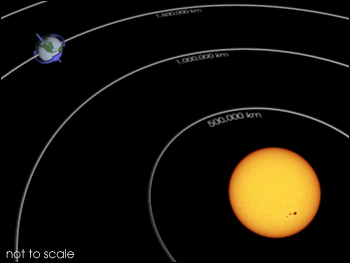September CHALLENGE ANSWERS
Earlier this month I challenged you to correct my mistakes about the Sun and Earth. Click here to see the earlier post or if you’d like to take the challenge now.
…
I hope you noticed at least a few errors.
I received many emails, and I must say you all sure do know your stuff!
Hats off to:
- Lorelei Scatamacchia and her students at Richland Elementary
- Sue Tony and her students at St. Philomena School Junior High
- Jenna Winburn and her students at Bartlett Elementary
- Tiffany Fosburg
Kudos to you for finding the most errors!
How many mistakes did you find?
There were actually 8 major errors!
Whoops!
Let’s get this all straightened out! I’ll work through a ‘quick list’ of the answers; then if you want... you can DIG DEEPER by going through the links!
Have Fun!

Quick List
The Sun is the center of the solar system. Solar means sun!
When we see a sunrise or sunset, we are actually seeing the effect of Earth’s rotation on its axis. Earth is spinning us toward the sun (sunrise) or away from the sun (sunset).
The Sun moves throughout space carrying the planets along with it. Earth rotates on its axis once every 24 hours (a day) and travels, or orbits, around the Sun once every 365.25 days (a year). From our point of view, the Sun appears to move across the sky but it’s actually Earth that is moving (relative to the Sun).
The Sun and Earth are approximately 93 million miles apart, but the distance varies throughout the year because Earth’s orbit is an ellipse, not a perfect circle.
Earth is tilted not the Sun. Earth’s axis is tilted at 23.45°, which affects us in amazing ways, one of which is the changing of seasons. The Sun is not tilted. But it may surprise you to know that it does have a North and South Pole, like Earth. Why? It’s because the Sun rotates on its own axis. It actually takes between 25 and 30 days for it to rotate - depending on which part of the Sun you observe. The rotation rate at the equator is about 25 days but it takes about 30 days at the poles.
The Sun and Earth are actually closest to each other during the Northern Hemisphere winter, when it is coldest, and farthest from each other in Northern Hemisphere summer, when it is warmest. Are you surprised?
Earth is warmest at the Equator because that is where Earth receives the most direct light and heat from the Sun.
The Equator is an imaginary line that runs perpendicular to Earth’s axis, not through the poles.
DIG DEEPER
Whew! That was a lot of information to take in, but there may still be more questions you are asking. Here are some links to help you out, if you’re curious.
Why is Earth’s orbit an ellipse and not a circle?
Photo Credit: NASA


Comments